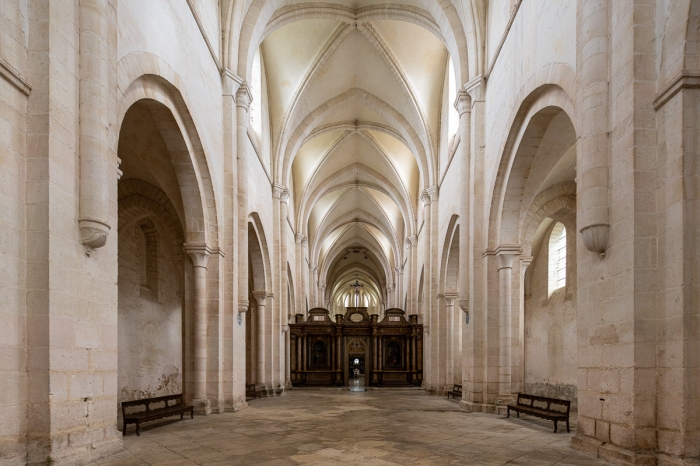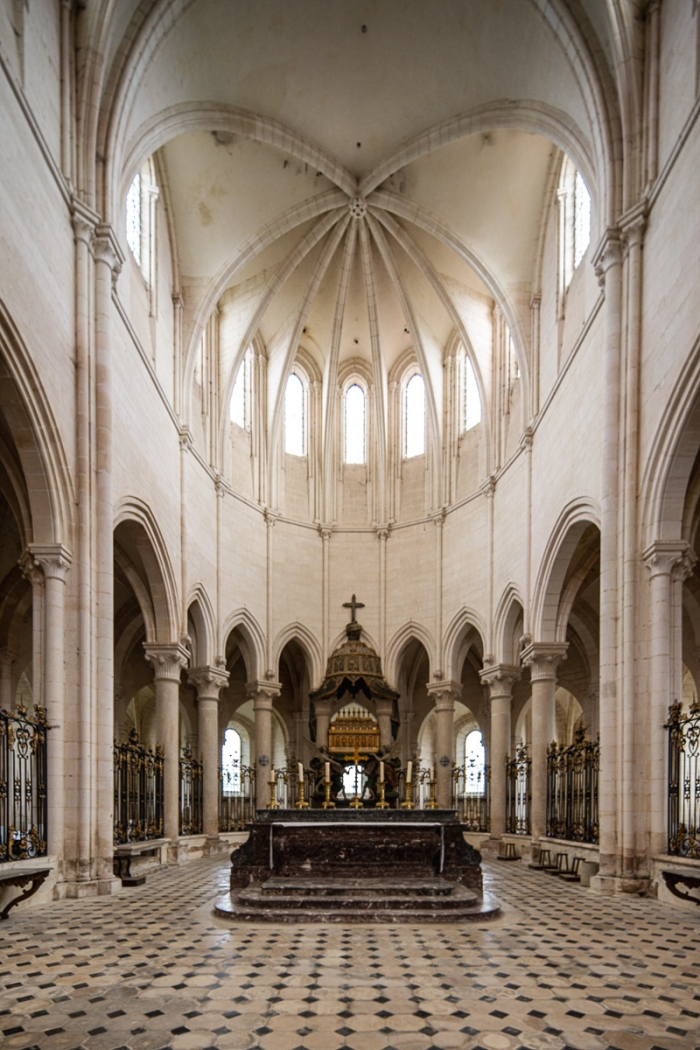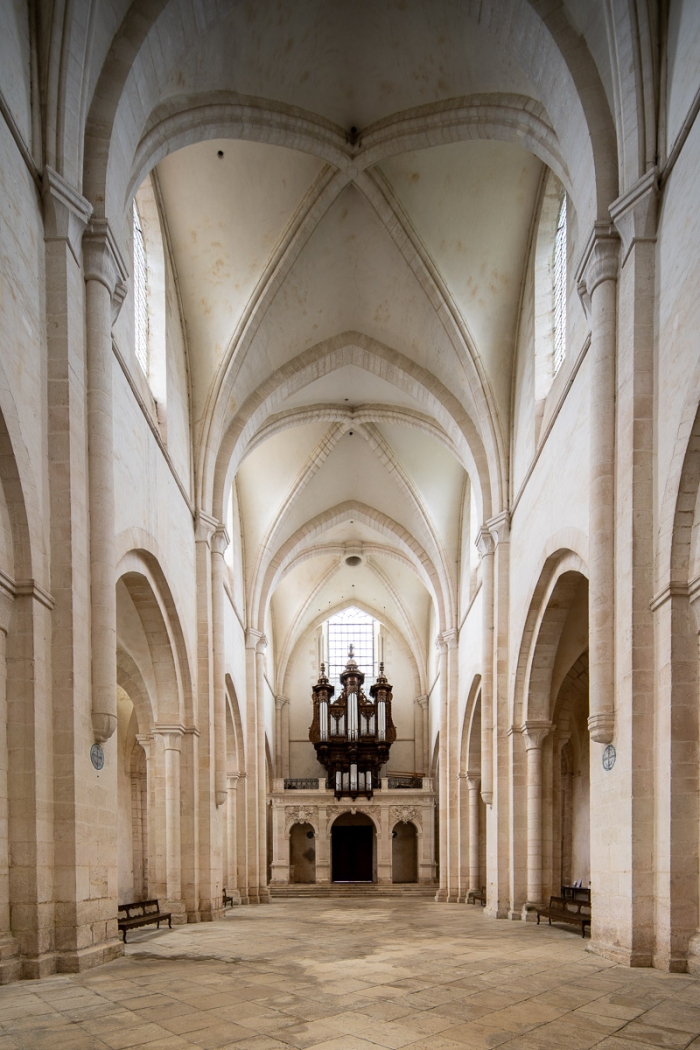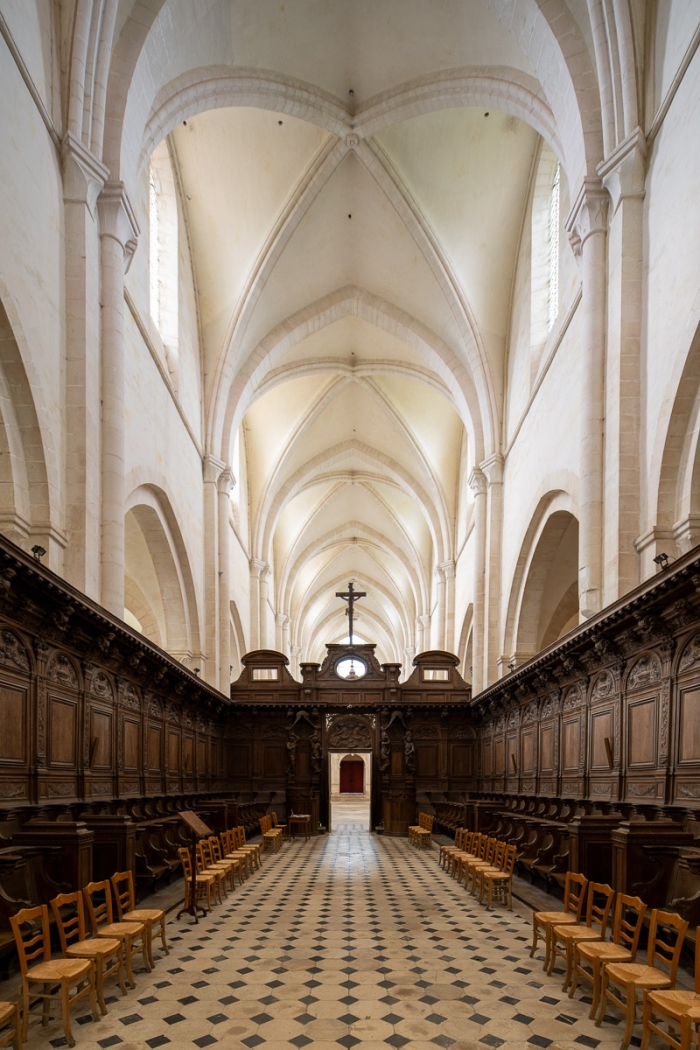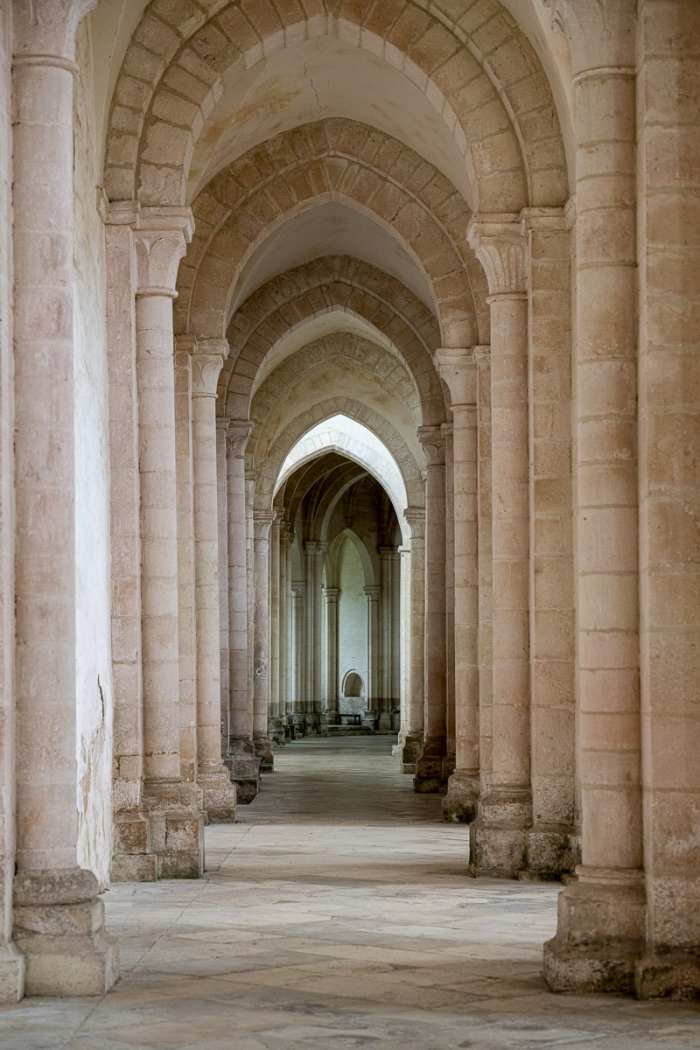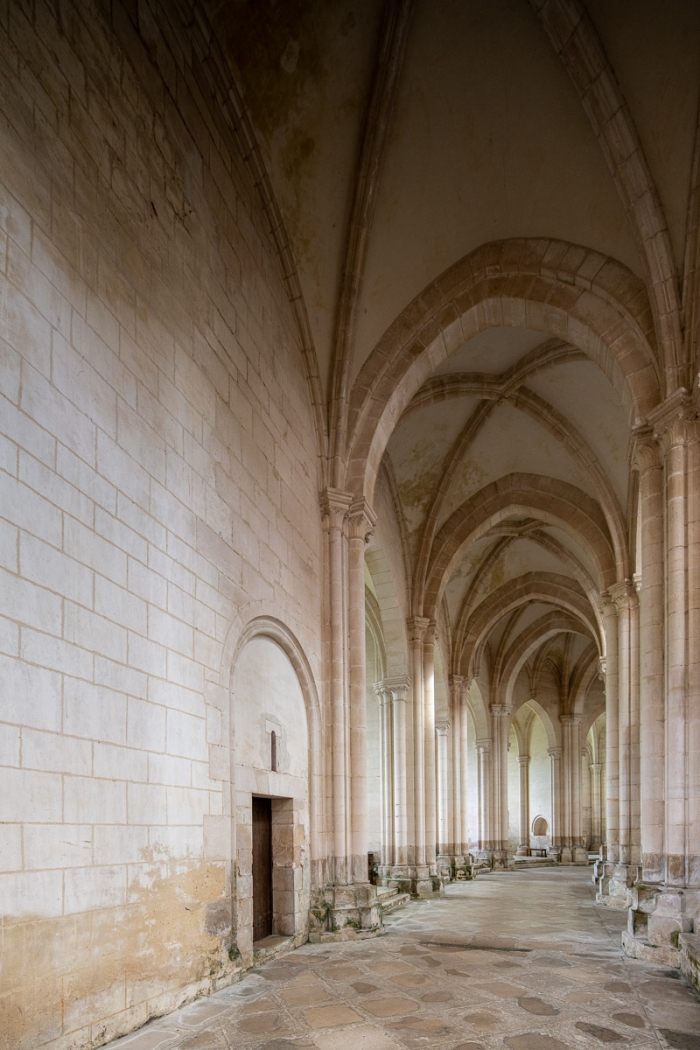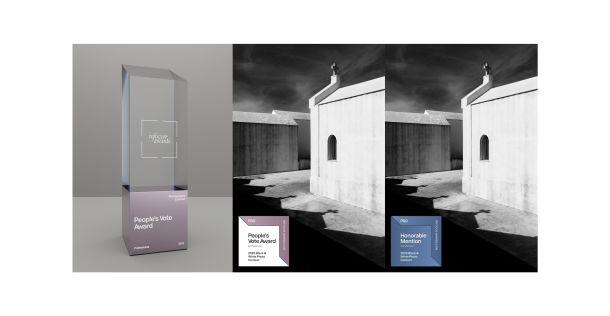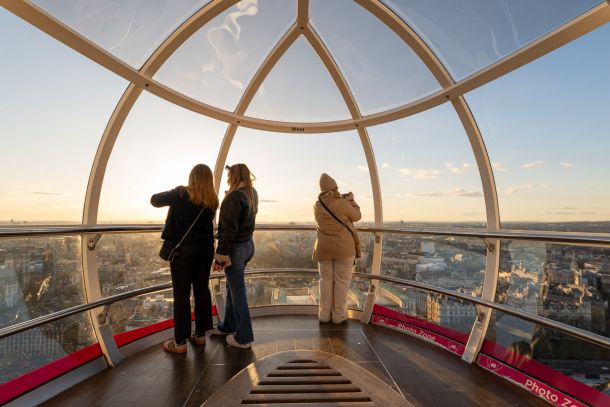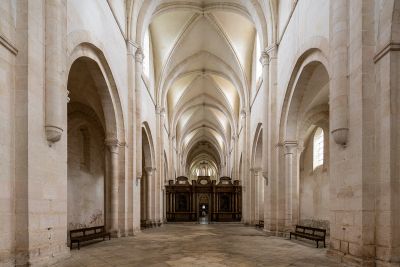

Pontigny: Light and Simplicity in the First Cistercian Abbey
In Burgundy, Pontigny Abbey embodies the Cistercian ideal in its purest form. Founded in 1114, it is the largest preserved Cistercian church in the world. Its sober lines, pale stone and natural light create an architecture that is both austere and inspiring.
Table of Contents
- An architecture of great purity
- The choir and its 17th-century stalls
- Light and perspectives
- A floor marked by history
- A place of silence and contemplation
An architecture of great purity
As soon as you enter the nave, you are struck by the verticality of the vaults and the clarity of the volumes. The massive pillars support Gothic arches without sculptures or ornate capitals. The white-glass windows let in a soft, natural light that glides across the limestone and highlights every architectural rib.
My images taken with the Canon TS-E 17mm tilt-shift lens do justice to this geometric rigor. Controlling perspective makes it possible to capture the harmony of the lines with precision, without distortion, and to emphasize the spiritual elevation conveyed by the architecture.
The choir and its 17th-century stalls
In the choir, the eye is drawn to the carved wooden stalls, installed in the 17th century. They contrast with the sobriety of the rest of the building, while bearing witness to a period of liturgical renewal and a different approach to representation. Their presence highlights the passage of time and the different layers of use of the abbey over the centuries.
Photographed in symmetry, these stalls introduce a material warmth into the mineral space, without breaking the overall balance of the ensemble.
Light and perspectives
At Pontigny, light is a major component of the architectural experience. It is not colored, but modulated by the openings and their orientation. It varies with the time of day, caressing sometimes the vaults, sometimes the side walls. It was this light that I sought to capture through axial or lateral compositions, playing with the repetition of arches and the depth of the bays.
With the Nikon 70-200mm telephoto lens, I was able to isolate certain details, notably the alignments of side aisle arches, which create a visual rhythm that is almost musical. A way of translating into image the experience of walking through a place designed for prayer, work and contemplation.
A floor marked by history
Beneath the visitor’s steps, the floor of the abbey church reveals discreet signs, remnants of the past. Among them, a symbol painted in blue catches the eye: a cross above a circle adorned with three fleurs-de-lis. This marking is not insignificant. It indicates the location of the tomb of Queen Adela of Champagne, wife of Louis VII and mother of Philip Augustus, buried at Pontigny after her death in Paris in 1206.
This tomb, still visible in the 17th century, has now disappeared, but its memory endures through this motif painted on the pavement. It recalls that Pontigny was also a royal burial place, imbued with a deep spiritual dimension and charged with symbols. Here, history intertwines with liturgy, within the silence of an architecture that has remained faithful to its original vocation.
A place of silence and contemplation
Photographing Pontigny Abbey means entering a space where every stone seems to resonate with an ancient echo. The visual austerity is not an absence, but an intention: that of focusing attention on the essential. Without stained glass, without narrative frescoes or decorative sculptures, the place invites a rare form of inner presence.
In an age saturated with images and noise, this place of balance and light offers a breath of air. Far from being frozen, Pontigny’s Cistercian architecture retains an intact evocative power, enhanced by natural light and the calm of an edifice stripped of all ostentation.
Click on the photos below to view them full screen.
All the photos displayed on this website are copyright protected © Sebastien Desnoulez. No use allowed without written authorization.
Legal Notice
About the Author
Sebastien Desnoulez is a photographer of architecture and landscape. He captures each remarkable site with precision and sensitivity, especially historic and religious monuments, documenting them as witnesses of their era and of the architectural achievements that shaped them.
Also worth exploring: Autumn Colors in Burgundy, Sancerre, Pouilly-sur-Loire and Briare
Tags
I am represented by the gallery
Une image pour rêver
